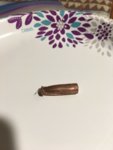https://www.luckygunner.com/lounge/why-ballistics-gel-works/
Basically the take away for me is to keep my projectile above 2200fps for making a larger wound channel.
Basically the take away for me is to keep my projectile above 2200fps for making a larger wound channel.


